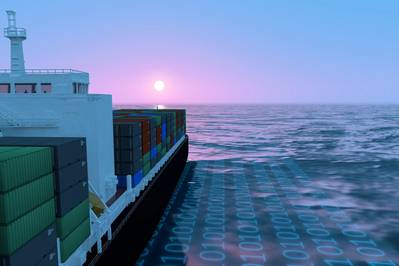Autonomous Ships or Better Decision Making?
Looking back through articles on autonomous shipping, one could be forgiven for thinking that it’s becoming the nuclear fusion of maritime; always seemingly five or 10 years away but never quite arriving.
In 2018, numerous commentators predicted that by 2030, autonomous vessels would be commonplace. With the lifecycle of most ships making this very difficult, barring a massive program of scrappage and new building, this is now looking less likely.
As an industry we have undoubtedly learned much from the trials of autonomous ships and the advances in big data that have stemmed from such trials. It raises two interesting questions: if the whole concept behind autonomous ships is supposedly focused on increasing safety, what can we do with this current data to keep the global fleet safe? How can we use technology to support decision making on board, if we are still a way off replacing the people who make these decisions?
Solving these challenges is particularly pertinent to the passenger and cruise segment; the ongoing work in this area is a great example of how digitalization is enhancing onboard decision-making instead of replacing it. Much of this development is taking place in the areas of flooding response and stability.
Historically, fire was one of the major threats to cruise vessels. This is why, for the last 30 years, every passenger ship has had a fire display in the command room, which indicates where a fire is located and whether it is expanding. However, the most serious passenger ship incidents, from 1912 to the present day, haven’t been caused by the spread of fire but through the spread of water across a vessel. A term more commonly known as flooding.
Until the development of NAPA Emergency Computer, there was no display available for flooding. Moreover, the thousands of cabins, staircases, tanks for water, fuel and different rooms inside a cruise vessel, make it difficult to model how water will move through each individual vessel. This is why we developed, and continue to develop, NAPA Emergency Computer.
The system uses the ship’s flooding sensors to automatically deliver greater awareness of a flooding situation directly to the bridge. Unique algorithms based on sensor-measured water flow and speed data understand how floods progress on-board, and each vessel’s unique NAPA 3D model calculates what the extent of the flooding will be, how many compartments will be at risk, and if the ship will survive upright. It uses the sensors on the vessels watertight doors to determine if they are closed (as they should be in almost all situations), and if not, how that will affect flooding and stability.
Many of the lessons learned from this project can be applied to inform work in other areas, such as decision support. Developing solutions in this area requires collaboration between multiple parties to establish common ground in assessing and reacting to risk. In December, we joined a consortium of stability experts called FLARE to do just that.
The goal of the project is to develop an all incidents in one model, and holistic, active and passive measures, risk model, with potential applications for both newbuildings and existing ships.
In practice, this means that crew will be better aware of how their actions will affect the safety of a ship in any given situation and how their actions affect the vulnerability of their ship. For example, many incidents can be mitigated by closing the watertight doors, however, situations such as maintenance will require these doors to be open at times. This research will help analyse traffic, weather and other conditions to establish risk guidelines to help captains, crew, and managers assess when it is safe to take actions like these.
We will lead the research into the mitigation of flood risk, using measurements and predictions of progressive flooding to enhance the provision of vulnerability monitoring and survivability assessments across the passenger sector.
By drawing on the simulation capabilities of NAPA Emergency Computer, which assesses the vulnerability of an intact ship as well as its survivability in case of a flooding emergency, those in the flood risk workspace can improve their monitoring, assessment and analysis of a “live” flood, and in turn, accelerate ship-shore response.
Widespread autonomous shipping could be five years away for the next several years. However there is plenty that we can do in that time to use the data that we have to enhance the safety across our current fleet.
 The Author: Jussi Siltanen, Senior Product Manager, Safety Solutions at NAPA
The Author: Jussi Siltanen, Senior Product Manager, Safety Solutions at NAPA














